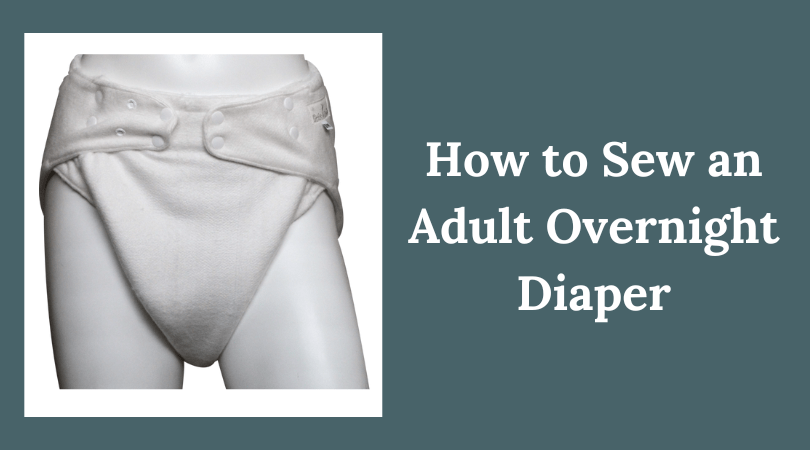When managing incontinence, overnight needs frequently call for more protection than daytime. While you can add inserts to your existing products, having a product with more absorption and greater coverage can be helpful.
In this tutorial, we’ll go over how to sew an overnight adult fitted cloth diaper. You can make your own pattern or to purchase the pattern in this tutorial, go to Little Onion Incontinence Patterns.
How to Make an Overnight Adult Cloth Diaper – Supplies
Fabric
Since an overnight diaper is like a beefed up fitted, it is meant to be made completely from absorbent fabrics with the waterproof layer as a separate cover. While you can use any absorbent fabric, don’t be afraid to experiment with heavier weight options.
Remember, this is for nighttime protection and when you’re sleeping, a little extra bulk is not a big deal.
In my Etsy shop, I’ve made this pattern with heavy and super heavy bamboo fleece.
If rash and chafing is a problem, use microfleece for the inside panel to create a soft, stay dry layer against the body.
Notions
Universal, Jersey, or Stretch needles – If you choose a knit fabric like fleece or anything with stretch, stretch needles are ideal. For woven fabrics, universal needles work well.
Elastic – ⅜” knit elastic is best. Knit elastic does not lose stretch when sewn. I’ve also found that ⅜” is sufficient for leg openings and the waist since front closure incontinence items do not rely solely on elastic to hold it up. For an overview of elastic types, check out Seamworks’ guide.
Fasteners – Optional. You can use hook and loop tape or snaps to fasten the fitted adult cloth diaper, but diaper pins, boingos, or snappis can also be used if you don’t have the tools for snaps or don’t want to deal with hook and loop tape. Check out my recommendations here.
Sewing Machine – while just anything can be sewn by hand, it’s much less time intensive to use a sewing machine. All you need is a basic machine to sew an adult fitted cloth diaper.
An Overnight Diaper Pattern – You can make your own pattern by tracing an existing diaper or purchase my Overnight Adult Cloth Diaper Pattern. I’m using that pattern for this tutorial.
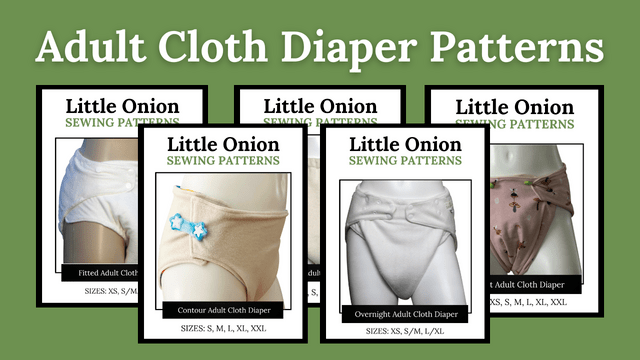
Sew Your Own Cloth Diapers!
Now available! A collection of 5 adult cloth diaper sewing patterns. No more buying expensive diapers, it’s time to make your own!
How to Make an Overnight Adult Cloth Diaper – Cutting Fabric
Start by cutting out your pattern and fabric. You will need 2 diaper panels, one for the outside and one for the inside.
There is also an XL and a regular size sewn in insert. How many layers you choose to do depends on the fabric you choose for the sewn-in absorbency. Thinner fabrics like flannel will need more layers than heavier ones like fleece or zorb.
If using more than 2 layers of fabric for the sewn-in insert, I recommend zigzag stitching down the center of the layers before finishing the edges to help keep the layers from shifting when washed.
When folding the fabric, only fold it as much as you need to in order to fit the pattern. This will help save you a ton of fabric, especially on the larger size of diapers.
How to Sew an Overnight Adult Fitted Cloth Diaper
Once you have your pieces cut out, it’s time to sew!
Step 1:
Start by finishing the edges of your insert layers if you have more than one or the fabric tends to fray. A simple zigzag stitch works just fine. It doesn’t need to look pretty since it will be sewn inside the diaper.
To see the different ways to finish the edges of an insert, check out my post, How to Sew Adult Cloth Diaper Inserts.
Just note, I don’t recommend turning and topstitching for a sewn-in insert as it would add unnecessary bulk around the seams. However, sewing an additional insert to use as a booster for your fitted is a great way to add extra absorbency without increasing drying time.
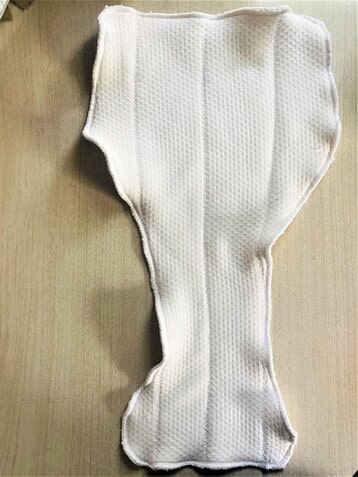
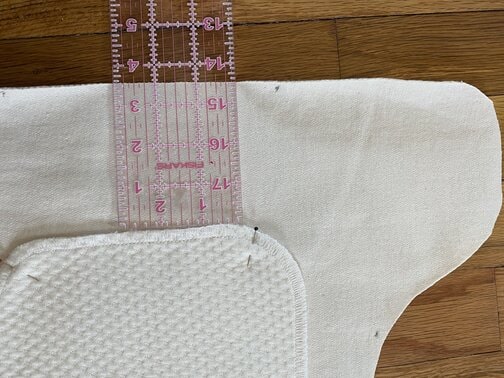
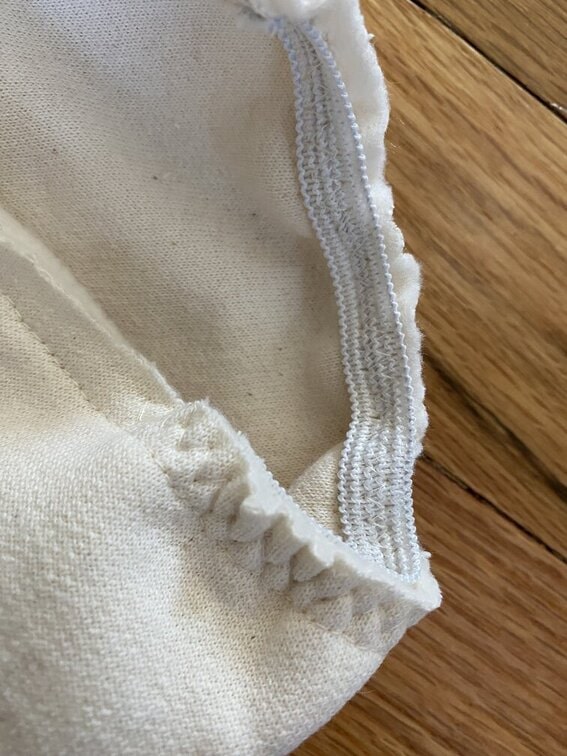
Step 2:
Center the smaller insert layer(s) on the XL insert layer(s). If you have a lot of layers, zig-zag stitch down the center before stitching around the smaller layer.
Pin and stitch insert to the inside of the diaper panel about 3” from the top of the diaper front.
Step 3:
Lay right sides of diaper panels together, pin and stitch. Be sure to leave a few inches for turning. I like to leave the side open on the top front of the diaper.
Step 4:
Stitch elastic to legs, front, and back of diaper. The small front elastic piece works to prevent the diaper from gaping in the front when worn.
Step 5:
Turn and topstitch the diaper. Make sure you topstitch around the elastic rather than through it.
Step 6: Optional
Attach hook and loop tape or snaps to the diaper front and wings. See How to Add Hook and Loop Tape or Snaps to an Adult Cloth Diaper for step by step instructions.
Done!
For heavy overnight protection, you need a product that will deliver. By making your own, you can ensure that you have the level of absorbency that will best fit your needs.
For more in-depth tips and tricks on sewing cloth incontinence products, join our community on Facebook at Little Onion Incontinence Patterns.
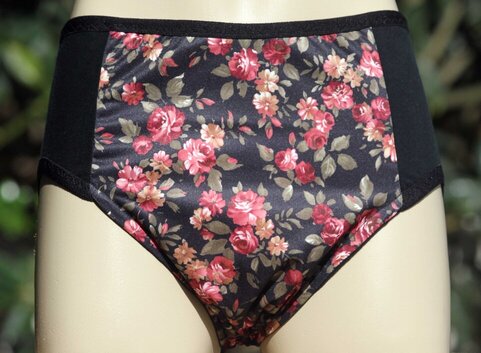
Want to sew your own cloth incontinence items?
Sign up for my VIP Pattern Group to be the first to know when new patterns are here!
Also recieve free sew tips and tutorials.
Alecia
Latest posts by Alecia (see all)
- How to Make a Cloth Diaper Bigger - August 21, 2023
- Best Swim Diapers for Adults and Youth - July 18, 2023
- Adult Cloth Diaper Hacks: How to Make a Swim Diaper - July 14, 2023

